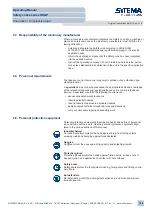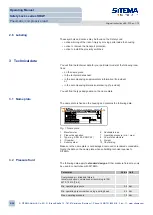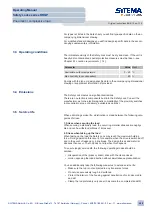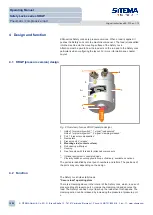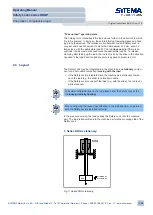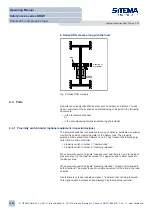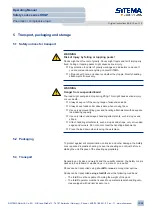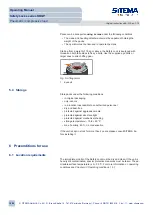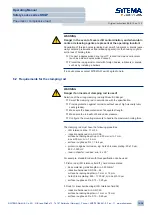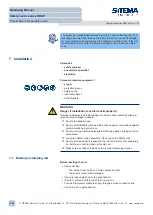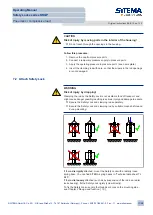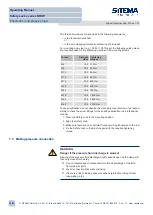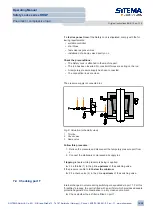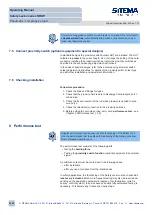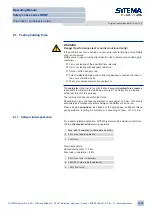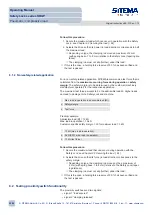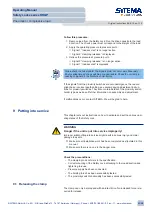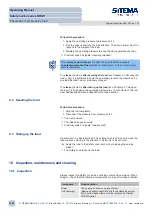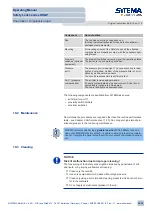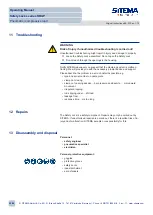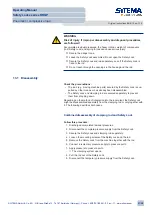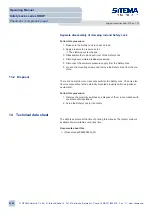
8.1 Testing holding force
WARNING
Danger if performance test is carried out incorrectly!
If the performance test is carried out incorrectly, safe functioning of the Safety
Lock is not assured.
Malfunctions during checking might result in risk to personnel and damage to
machinery.
Ü
Carry out testing at the specified time intervals.
Ü
Carry out testing with adequate test force.
Ü
Cordon off the danger zone.
Ü
Attach suitable damping and cushioning devices to cushion the load in
the event of malfunctions.
Ü
Wear your personal protective equipment.
The
main aim
of the test is to verify that an adequate
holding force reserve
is available to withstand the load being secured. The Safety Lock is loaded
with a test force for this purpose.
The rod must not slip under this test force.
Depending on type, the tapering distance is a maximum of 2 mm. This drop is
admissible as a relative movement between the Safety Lock and rod.
When using a
spring base
, the stroke h of the spring base is added to this ta-
pering distance, resulting in a total drop – depending on type – of 7 to 8 mm.
8.1.1 Safety-related application
For a safety-related application, SITEMA recommends a maximum test force
of
1.5 x the maximum load
during operation:
Max. load in operation (≤ admissible load (M))
+
50 % max. load in operation
=
Test force
Practical example:
Admissible load (M) = 10 kN
Max. load in operation = 8 kN
8 kN (max. load in operation)
+
4 kN (50 % max. load in operation)
=
12 kN (test force)
Operating Manual
Safety Locks series KRGP
Pneumatic / compressive load
Original instructions BA-S12-en-1-15
© SITEMA GmbH & Co. KG . G.-Braun-Straße 13 . 76187 Karlsruhe (Germany) . Phone: +49(0)721/98661-0 . Fax: -11 . www.sitema.com
21/28

